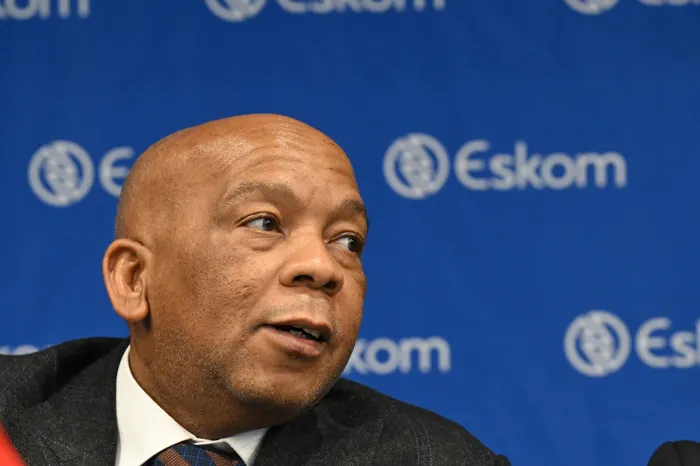South Africa looks East for low-emission coal technologies to support energy transition
ENERGY

Electricity and Energy Minister Kgosientso Ramokgopa has said that he was in active discussions with China and Japan to adopt their technology of low temperature coal burning with ammonia to reduce emission levels.
Image: Henk Kruger / Independent Newspapers
Banele Ginidza
Electricity and Energy Minister, Kgosientso Ramokgopa, has announced that the government was actively engaging with technological leaders in China and Japan to embrace low-temperature coal-burning techniques paired with ammonia, aiming to mitigate emissions without dismantling the current coal-dependent energy structure.
This initiative is seen as a necessary step towards repurposing aging coal-fired power stations such as Komati and Rietvlei, while ensuring that South Africa’s energy demands are met sustainably.
During a recent session in the House of Assembly's plenary session, Ramokgopa responded to questions from various Members of Parliament, including IFP's Nompumelelo Mhlongo, People's Assembly Wayne Thring, MK Party's Adil Nchabaleng, and DA's Kevin Mileham.
Ramokgopa emphasised that the core issue lied not with coal itself, but with the emissions produced.
He lamented the handling of the JET process thus far, particularly regarding its impact on regions like Komati, where economic vitality has been severely undermined by the transition.
"We could have managed Komati much much better. In the throes of load shedding when you have load shedding, you undermine your ability to continue to generate and meet that energy demand," Ramokgopa said.
"Komati is a classic example, a template of how not to transition. I think the biggest lesson out of Komati is how not to transition because what that does is it undermines our sovereign interest because the totality of what constitutes Just Energy Transitions is that it must take into account the sovereign and domestic requirements. And in our instance, it's not just the availability of the electrons on the grid it's also the socioeconomic impact of the decisions we are making."
The coal-fired Komati power station in Mpumalanga was decommissioned at the end of October 2022 as it reached the end of its 60-year life. The power plant was earmaked to be converted into a renewable generation site powered with 150MW of solar, 70MW of wind and 150MW of storage batteries.
Ramokgopa said that the calculus of decision-making was heavily in favour of environmental requirements without taking into context the economic impact in that geographic space in Komati.
He laid out a future vision where the integration of advanced international technologies could lead to a renewed focus on coal that aligns with modern emissions standards.
Ramokgopa outlined plans to examine co-firing ammonia with coal, what China is curently doing, as one solution to reduce emissions while breathing life back into severely impacted economies. He said this could provide quality jobs and skills training for locals, aiding their reintegration into the mainstream economy.
"We are examining options and opportunities for us to repurpose and repower Komati as an example because it applies to some of the units in Camden, Rietvlei and Hendrina that have been closed," he said.
"We are looking at options such as gas-to-power solutions, co-firing ammonia with coal to reduce the amount of emissions but also be able to rebuild the economies of those spaces so that people can find quality jobs, the skills that are required and participate in the mainstream economy."
Ramokgopa is currently on a workin gvisit to the People’s Republic of China aimed at strengthening South Africa’s energy capacity to counter the declining energy security and advancing the country’s transition towards a more reliable and sustainable energy system.
The outcomes of this visit are expected to include a technology benchmarking assessment, operational insights related to grid management, and frameworks forbilateral cooperation that will pave the way for future investments in South Africa'senergy sector.
"This working visit to China is not merely a technical mission; it is a strategic engagement aimed at asserting our sovereign energy diplomacy and securing the partnerships necessary for sustainable industrial development with specific interest in high voltage DC transmission and high frequency distribution smart networks," he said.
While outlining the government’s ambitious goals in Parliament, Ramokgopa indicated that specific timelines for implementation remain unclear, as discussions with Chinese and Japanese entities are ongoing.
"We will explore solutions that enhance energy security and respond to socio-economic requirements,” he said, underscoring the importance of acting swiftly to rejuvenate the existing energy ecosystem.
"We need to ensure we are able to replenish and refurbish the existing fleet, we are not sitting with a coal problem. It's an emissions problem and as existing technology throughout the globe, if you go to the Chinese as I speak, they are installing 70GW of new generation capacity just coming from coal."
BUSINESS REPORT